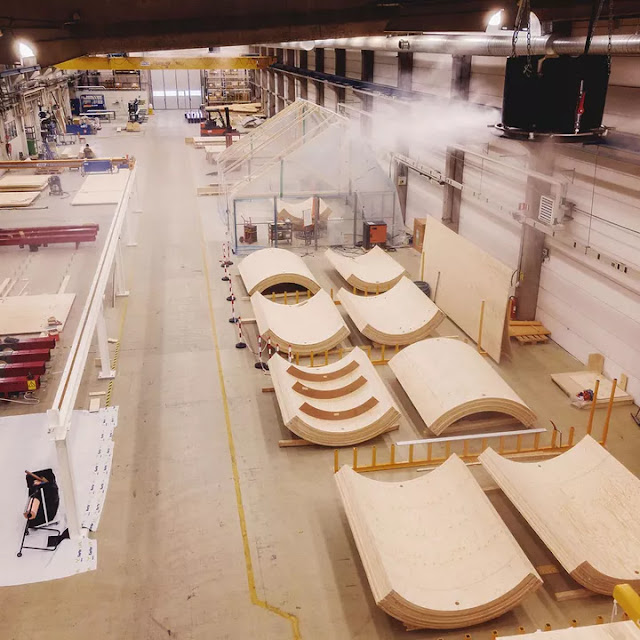One of the many complaints we hear about wind turbines from fossil fuel fans is that turbines have a high carbon footprint—thanks in part to the steel in their towers—so it is counterintuitive to invest in them. U.S. President Joe Biden's notorious predecessor once complained,
"The fumes coming up, if you are a believer in carbon emission, the fumes coming up to make these massive windmills is more than anything we are talking about with natural gas, which is very clean." In fact, life cycle analyses give wind turbines a carbon footprint averaging 11 grams per kilowatt-hour—30% of which comes from the steel tower. (Natural gas is 450 grams per kilowatt-hour just from combustion.)
Now, Stora Enso, one of the world's oldest and largest timber companies, is working with Swedish tower builder Modvion to build wind turbine towers out of laminated veneer lumber (LVL). Otto Lundman, CEO of Modvion, said in a statement: “To solve the climate crisis, we need more renewable energy as well as increased use of sustainable, wooden constructions. Together with Stora Enso, we can enable both.”
Treehugger covered the Modvion timber turbine towers a few years ago when it was at the early prototype stage, but the project has advanced significantly. Modvion completed a 30-meter (100-foot) prototype in 2020 and is now working on a 100-meter (330-feet) tower for Varberg Energi. It is now turning out giant curved slabs of LVL that will be glued together into tubular sections on site. This is a major advantage over steel towers, which are usually giant cylinders that are hard to transport and don't fit under bridges.
The Stora Enso-supplied Scandinavian spruce is certified under FSC (Forest Stewardship Council) or PEFC (Programme for the Endorsement of Forest Certification) standards. The carbon emission savings are significant: Modvion states the life cycle emissions of a 360-foot steel tower are about 1,250 metric tons of carbon dioxide (CO2) while a wood tower has 90% fewer emissions, at 125 metric tons.
And that is without taking credit for any carbon storage in the wood, which they account for separately:
"Considering that the wood tower also stores carbon dioxide, the tower’s actual climate impact is lower. A wooden construction stores approximately 1.8 tonnes of carbon dioxide per tonne of wood. A 110m tall tower weighs 180–300 tonnes, depending on the size of the turbine being supported. This means a carbon dioxide storing capacity of 540 tonnes and a net climate impact of minus 300–400 tonnes of carbon dioxide."
As we mention every time we talk about wood, the question of how much CO2 is stored in wood construction is controversial. The CO2 savings from replacing steel are not, and they reduce the lifecycle operating costs of the wind turbine by 30%.
Modvion describes how strong LVL towers are, cleverly calling laminated wood "nature's own carbon fiber, which is stronger than steel at the equivalent weight." They also note wood towers don't have 50,000 steel bolts that all have to be inspected:
"Laminated wood has three huge benefits compared to steel: Wood has a higher specific strength which enables a lighter construction. High steel towers need extra enforcement to carry their own weight—which wooden towers don’t need. And finally, modular steel towers demand a vast number of bolts that need regular inspections while our modular wooden towers are joined together with glue."
One would think wood towers would need regular inspections too, especially when it comes to issues of moisture. Modvion explains its towers are coated with a thick paint that makes them watertight. It adds, "This creates a controlled volume of air on the inside that interacts with the solid wood volume. The stable system keeps a healthy margin towards any humidity issues."1
Treehugger - link - Lloyd Alter - link - more like this (wind turbines) - link - more like this (Sweden) - link

No comments:
Post a Comment